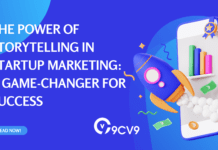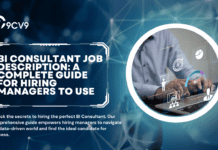Key Takeaways
- Vibe coding uses AI tools like GitHub Copilot to automate code generation, accelerating development and enabling faster MVP creation.
- It transforms the developer’s role from coder to AI orchestrator, requiring skills in prompt engineering, architecture, and quality oversight.
- When integrated with Agile and DevOps, vibe coding enhances productivity, but demands responsible adoption to manage risks like technical debt and security flaws.
In the ever-evolving landscape of software engineering, 2025 marks a critical turning point in how code is conceptualized, written, and deployed. Traditional software development—once reliant solely on human logic, syntax mastery, and iterative manual input—is now being fundamentally reshaped by artificial intelligence (AI). At the forefront of this transformation is a rapidly emerging paradigm known as vibe coding. Often described as the natural language-powered, AI-augmented evolution of programming, vibe coding represents a seismic shift in how developers interact with codebases, frameworks, and software architecture.

Vibe coding is not merely a trend—it is an intelligent, prompt-driven development methodology that allows developers, product teams, and even non-technical professionals to collaborate with AI models like GPT-4, Claude, and other large language models (LLMs) to generate, refine, and manage codebases at unprecedented speeds. By focusing on intention rather than implementation, vibe coding transforms programming into a conversational and intuitive process. Instead of writing every line of code manually, developers now issue high-context, natural language prompts, guiding AI tools to build functions, interfaces, test cases, and documentation autonomously.
This technique stands in stark contrast to traditional software engineering methodologies. Conventional approaches rely on structured planning, labor-intensive syntax creation, peer code reviews, and formal QA workflows. Vibe coding disrupts this status quo by dramatically accelerating prototyping, minimizing boilerplate, and making coding more inclusive and accessible. Whether building MVPs, experimenting with new frameworks, or testing ideas, developers can now transition from idea to execution in hours rather than weeks.
Yet, the rise of vibe coding raises important questions. What are the practical mechanics behind vibe coding? How does it compare to conventional coding practices? What are the inherent trade-offs between speed and control, or flexibility and structure? And, critically, how can developers and organizations adopt vibe coding responsibly while managing risks such as security vulnerabilities, technical debt, and the erosion of foundational programming skills?
This comprehensive guide explores these pressing questions in detail, offering an advanced, in-depth analysis of how vibe coding works in 2025, its core components, operational workflow, and its synergistic integration with Agile, DevOps, and modern development pipelines. The article also examines key differentiators between traditional coding and AI-assisted development, presents real-world use cases, and highlights evolving roles within the development lifecycle—including prompt engineering, AI model orchestration, and AI code verification.
Key topics covered in this blog include:
- A formal definition and breakdown of vibe coding in the context of 2025 software trends
- The architecture and anatomy of a vibe coding workflow: from prompt to product
- Comparative analysis: Vibe Coding vs Traditional Coding methodologies
- The role of large language models (LLMs) and multimodal interfaces in automating development tasks
- Integration of vibe coding with Agile, CI/CD, DevOps, and test automation practices
- Real-world implications on Developer Experience (DX), productivity, accessibility, and inclusivity
- Strategic considerations for responsible adoption, including prompt engineering, AI governance, and human oversight
- The future of developer roles, emerging skills, and ethical considerations around AI-generated code
For engineering leaders, CTOs, software architects, product owners, and forward-thinking developers, understanding vibe coding is no longer optional—it’s essential. As organizations seek to harness AI to streamline workflows, reduce time-to-market, and enable broader participation in software creation, vibe coding emerges as the next major innovation in digital product development.
Read on to explore everything you need to know about what vibe coding is, how it works, and why it is rapidly becoming a foundational pillar of next-generation software engineering.
Before we venture further into this article, we would like to share who we are and what we do.
About 9cv9
9cv9 is a business tech startup based in Singapore and Asia, with a strong presence all over the world.
With over nine years of startup and business experience, and being highly involved in connecting with thousands of companies and startups, the 9cv9 team has listed some important learning points in this overview of What is Vibe Coding and How It Works.
If your company needs recruitment and headhunting services to hire top-quality employees, you can use 9cv9 headhunting and recruitment services to hire top talents and candidates. Find out more here, or send over an email to [email protected].
Or just post 1 free job posting here at 9cv9 Hiring Portal in under 10 minutes.
What is Vibe Coding and How It Works
- Executive Overview
- A Comprehensive Analysis of an AI-Led Software Development Transformation
- A Deep Dive into the Conversational Development Workflow
- Benefits, Impact, and Strategic Advantages
- Challenges, Risks, and Strategic Limitations
- Adoption Trends and Market Penetration in 2025
- Vibe Coding in Context: A Comparative and Integrative Perspective
- Best Practices for Responsible Adoption of Vibe Coding in 2025
- The Future of Vibe Coding: Forward-Looking Perspectives Beyond 2025
- Navigating the Vibe Coding Revolution: Strategic Framework for 2025 and Beyond
1. Executive Overview
- Vibe Coding represents a fundamental reimagining of how software is created.
- Coined by AI visionary Andrej Karpathy in early 2025, it denotes a human-AI collaborative paradigm, where developers express software intentions via natural language, and AI systems generate operational code in return.
- This shift has led to enhanced speed, broader accessibility, and transformative changes across startups, enterprises, and independent developers alike.
1. Understanding Vibe Coding: Definition and Conceptual Foundations
What is Vibe Coding?
- A modern AI-augmented development model driven by large language models (LLMs) like GPT-4, Claude, and CodeWhisperer.
- Characterized by:
- Intent-based coding: Developers state goals; AI handles syntax.
- Rapid prototyping: From idea to deployable code in minutes.
- Conversational workflows: Interacting with codebases through prompts, speech, or chat interfaces.
Key Differentiators from Traditional Development
| Feature | Traditional Coding | Vibe Coding |
|---|---|---|
| Syntax dependency | High | Low |
| Toolchain complexity | Manual, fragmented | Integrated AI tooling |
| Entry barrier | High (requires expertise) | Lower (non-coders can prototype) |
| Role of developer | Code writer | Prompt designer, reviewer, architect |
| Speed of execution | Moderate | Up to 10x faster for certain tasks |
2. Market Penetration and Adoption Trends
Global Adoption Metrics (As of Q2 2025)
- 82% of software developers actively use AI coding assistants (Stack Overflow Developer Survey 2024).
- 25% of startups in Y Combinator’s Winter 2025 batch claim 95%+ of their codebase is AI-generated.
- Over 1 million developers use GitHub Copilot.
- 78% of engineering teams at mid- to large-sized firms have integrated AI coding tools (GitLab).
Adoption Growth Rate (2023–2025)
| Year | AI Tool Usage (%) | AI Favorability (%) |
|-------------|-------------------|----------------------|
| 2023 | 44% | 77% |
| 2024 | 61.8% | 72% |
| 2025 (est.) | 82% | 74% |
Projected Market Value of AI Coding Tools
- Estimated to reach $24.46 billion by 2031, growing at a CAGR of 24.3%.
- Accelerated by:
- Venture capital investment in AI tooling startups.
- Integration into mainstream IDEs and cloud platforms.
- Emergence of full-stack AI agents and coding copilots.
3. Core Technologies and Ecosystem Tools
Essential Platforms Powering Vibe Coding
- GitHub Copilot / Copilot X
- Autocomplete, code suggestion, and inline documentation.
- Now integrated with VS Code, JetBrains, and more.
- Cursor
- An AI-native IDE allowing natural language interaction with entire codebases.
- Replit Ghostwriter
- Cloud IDE with collaborative real-time coding and embedded AI.
- Vercel v0 / Create.xyz / Lovable.dev
- Frontend generators that build React components from prompts.
- Sourcegraph Cody
- AI coding assistant for enterprise-scale code navigation and refactoring.
Key Use Cases by Tool Type
| Tool Type | Platforms | Primary Use Case |
|---|---|---|
| IDE-integrated AIs | Copilot, Cursor, JetBrains AI | In-line code generation, refactoring |
| Prompt-based builders | Vercel v0, Create.xyz, HeyBoss | UI and app generation from text prompts |
| Voice interfaces | ChatGPT Voice, Windsurf agents | Conversational debugging and real-time coding |
| Codebase search agents | Sourcegraph Cody, Amazon Q Dev | Semantic search and batch editing |
4. Productivity and Efficiency Gains
Quantified Impact
- +26% increase in task completion rate among developers using AI tools (Microsoft–Accenture study).
- 13.5% more commits per week on average by Copilot users.
- Up to 10x acceleration in MVP delivery cycles reported by startups.
Matrix: Developer Productivity Metrics
| Productivity Metric | Non-AI Workflow | Vibe Coding Workflow | Efficiency Gain |
|---|---|---|---|
| Avg. Features Delivered/Week | 3 | 5 | +66% |
| Debug Cycles/Iteration | 4.1 | 2.7 | -34% |
| Onboarding Time (new hires) | 2–3 weeks | <1 week | -60% |
| Boilerplate Generation Time | 1–2 hours | 5–10 minutes | -85% |
Qualitative Benefits
- Reduced context-switching across tools.
- Enhanced accessibility for non-traditional developers.
- Elevated focus on architecture, UI/UX, and innovation.
5. Risk Factors and Strategic Challenges
Critical Concerns
- Security vulnerabilities: ~62% of AI-generated code contains potential flaws (BaxBench, 2025).
- Technical debt accumulation: Increased code churn from rapid generation (~100% higher in some studies).
- Skill atrophy: Over-reliance on AI can degrade developers’ foundational understanding.
- Debugging complexity: Tracing AI-produced logic across multiple files adds cognitive load.
- Compliance issues: Licensing, IP leakage, and unvetted third-party code risks.
Risk Management Matrix
| Risk Category | Severity | Likelihood | Mitigation Strategy |
|---|---|---|---|
| Code Quality | High | High | Human code reviews, test coverage mandates |
| Security | High | Medium | AI vulnerability scanners, SAST/DAST integration |
| Maintainability | Medium | High | Enforce modularity, limit AI in core logic sections |
| Developer Skills | High | Medium | Hybrid training: manual coding + prompt engineering |
| Compliance/IP | Medium | Medium | Use vetted AI models, internal prompts only |
6. Strategic Recommendations for Organizations
Imperatives for Sustainable AI Integration
- Establish AI usage guidelines:
- Define where AI code can be used (e.g., frontend vs. backend).
- Enforce review processes for AI-generated code.
- Upskill teams in prompt engineering:
- Provide structured learning in writing effective and secure prompts.
- Encourage mastery of both AI tooling and manual coding.
- Invest in AI observability tools:
- Track AI-generated code contributions, vulnerabilities, and regressions.
- Designate AI Code Stewards:
- Assign senior developers to review and validate all AI-assisted pull requests.
- Balance automation with architecture:
- Use AI to accelerate initial drafts; reserve complex systems for manual oversight.
7. Industry Leaders and Influencers
Key Drivers of Vibe Coding in 2025
- Andrej Karpathy – Introduced and popularized “vibe coding”; continues to influence development discourse.
- Y Combinator – Accelerating startups that rely on 90%+ AI-generated code.
- Microsoft, Google, IBM – Estimate that 20–30% of their production code is AI-generated.
- OpenAI – Backbone of AI tooling with Codex, ChatGPT, and agent frameworks.
- GitHub, Replit, Vercel, Sourcegraph – Building the foundational platforms for AI-augmented development.
Conclusion: The Future Outlook of Vibe Coding
- Vibe coding is not a passing trend — it represents a paradigm shift in software development.
- The productivity gains, democratization of software creation, and transformative potential are significant.
- However, strategic governance, ethical frameworks, and upskilling will be crucial to maximize its value while minimizing systemic risks.
- As enterprises embrace vibe coding, the winners will be those who view AI as a co-pilot—not a replacement—for intelligent, secure, and scalable innovation.
2. A Comprehensive Analysis of an AI-Led Software Development Transformation
Definitional Overview
- Vibe coding refers to a revolutionary paradigm in software development, wherein natural language expressions are directly translated into executable code through AI-powered models, particularly large language models (LLMs).
- Instead of manual coding or syntax-heavy inputs, developers communicate intent in conversational language (spoken or typed), and AI agents produce relevant, deployable codebases or components.
- The workflow embodies a prompt-first, intent-led coding experience, emphasizing rapid ideation, real-time collaboration with AI, and minimal need for low-level syntactic control.
Functional Impact on the Developer Role
- Developers are repositioned from primary code authors to:
- Strategists and architectural designers, responsible for defining software logic and constraints.
- Refiners and validators, overseeing the quality and accuracy of AI-generated outputs.
- Prompt engineers, crafting effective instructions to optimize AI performance.
Advantages in MVP Development and Prototyping
- Facilitates high-speed prototyping, reducing development timelines from weeks to hours.
- Ideal for building Minimum Viable Products (MVPs), especially in agile startup environments.
- Enables domain specialists and non-engineers to participate in software creation by bridging the technical gap through plain language input.
Rise of Personalized Software Applications
- The term “software for one” has emerged to describe hyper-customized tools generated by AI for individual needs.
- Example: Apps that interpret fridge contents to recommend lunch menus.
- This trend supports a new era of hyper-personalized utility software, driven by individual prompts rather than mass-market coding efforts.
Opportunities and Limitations: A Dual-Natured Development Model
Empowerment Through Accessibility
- Vibe coding promotes democratization of software creation by:
- Lowering the barriers for entry into development.
- Allowing professionals in fields like education, healthcare, and finance to create software tools without programming knowledge.
- Encouraging experimentation and creativity without formal engineering prerequisites.
The Black Box Problem
- A growing concern is the opacity of AI-generated code:
- Developers often accept code without understanding its logic, increasing the risk of fragile implementations.
- Lack of transparency may lead to reduced trust, maintainability issues, and problematic integrations with legacy systems.
Organizational Risk: Skill Dilution and Competency Gaps
- Overreliance on AI in development may lead to:
- A proliferation of “builders” who lack the skills to debug, test, or optimize AI-generated systems.
- A narrow elite of engineers required to oversee, secure, and interpret complex codebases built by non-technical users.
- Organizations must ensure skill redundancy and governance mechanisms to maintain sustainable and secure development environments.
Origins and Acceleration: From Fringe Concept to Mainstream Paradigm
Historical Genesis and Conceptual Maturation
- Coined and popularized by AI researcher Andrej Karpathy in February 2025.
- Karpathy described vibe coding as the moment a developer ceases to write code and starts to describe outcomes, allowing AI to synthesize the logic and structure.
- This philosophy evolved from Karpathy’s 2023 insight: “The hottest new programming language is English.”
Vibe Coding: Informal but Influential
- Not codified like Agile or Scrum; vibe coding is slang-turned-strategy, embraced organically by the tech community.
- It reflects an intuitive, less rigid model of AI-augmented development focused on collaboration between human intent and machine execution.
From Buzzword to Industry Standard: The Acceleration of Adoption
Timeline of Adoption Milestones
| Milestone | Date | Description |
|---|---|---|
| Karpathy’s Public Post | Feb 2025 | Term “vibe coding” publicly introduced via Twitter/X |
| Viral Adoption in Developer Circles | Feb–Mar 2025 | Concept spreads across Hacker News, Reddit, StackOverflow |
| Merriam-Webster Recognition | Mar 2025 | “Vibe Coding” added to slang dictionary category as a trending industry term |
| Investor & VC Focus | Q1 2025 | Startups focused on vibe coding raise significant funding rounds |
| Enterprise Pilots & Tool Integration | Q2 2025 | AI tools embedded into IDEs, cloud platforms, and product engineering teams |
Speed of Market Adoption and Commercialization
- The rise of vibe coding has collapsed the traditional hype cycle for new technologies:
- What once took 3–5 years to mature has occurred in under 12 months.
- This is attributed to:
- High baseline awareness of LLMs from 2023–2024.
- Maturation of developer-facing AI tools (GitHub Copilot X, Cursor, etc.).
- Existing demand for low-code/no-code alternatives.
Market Growth Projections
| Metric | Value | Projection Source |
|---|---|---|
| AI Code Generator Market (2025 est.) | $4.2 billion | Verified Market Research |
| AI Code Generator Market (2031 proj.) | $24.46 billion | CAGR: 24.3% |
| Estimated Developer Usage (2025) | 82% | Stack Overflow Developer Survey 2024 |
| Estimated Team Integration (2025) | 78% | GitLab State of DevOps 2025 |
Adoption Implications
- The pace of adoption underscores an urgency for adaptation:
- Companies must educate teams rapidly, develop internal governance, and adopt prompt engineering as a core competency.
- A widening adoption gap is observable:
- Early adopters are leveraging vibe coding to compress delivery cycles by up to 10×.
- Late movers risk falling behind in developer productivity, hiring competitiveness, and product velocity.
Conclusion: A Paradigm Requiring Strategic Foresight
- Vibe coding in 2025 represents a seminal turning point in the history of software development.
- While it opens unprecedented pathways for speed, democratization, and innovation, it simultaneously demands rigorous human oversight to prevent technical debt, maintain quality, and ensure codebase resilience.
- Organizations embracing this paradigm must balance enthusiasm with due diligence, treating AI not as a replacement for engineers, but as a collaborative augmentation requiring human strategy, security, and long-term stewardship.
3. A Deep Dive into the Conversational Development Workflow
Core Mechanics of Vibe Coding and AI-Human Synergy
Fundamental Process Flow
- Natural Language Prompting:
- The development process begins with the user describing the intended functionality in natural, conversational language.
- Examples include:
- “Create a dark-mode React dashboard with integrated Stripe checkout.”
- “Build an RSVP page where guests can submit their name and email.”
- The AI system translates these prompts into fully operational code, including:
- Frontend structures (e.g., React components, HTML/CSS)
- Backend endpoints (e.g., REST APIs, database hooks)
- Configuration files, scripts, and sometimes even test suites
- Iterative Dialogue Loop:
- If the output is incorrect, incomplete, or misaligned:
- The developer provides feedback or error messages.
- The AI regenerates or adjusts the code in real time.
- This creates a conversational development loop—an interactive, evolving dialogue between human and machine.
- If the output is incorrect, incomplete, or misaligned:
Cognitive Redistribution and Workflow Optimization
- AI automates:
- Boilerplate code generation
- Setup scripts and environment configurations
- Repetitive logic such as CRUD operations and form validations
- Developers focus on:
- Architectural thinking
- UX enhancements
- Business logic refinement
- Strategic debugging and optimization
Spectrum of Collaboration: Human Control vs. AI Autonomy
| Viewpoint | Philosophy | Implication |
|---|---|---|
| Simon Willison | LLMs as typing assistants | Human maintains full understanding and control over the code |
| Andrej Karpathy | AI-driven development where one “forgets code exists” | AI dominates execution; human provides conceptual direction |
| Balanced Approach | AI acts as an intelligent augmentation layer | Human guides, interprets, and refines AI output to ensure reliability |
Key Statistic: AI Code Modification Requirement
- On average, 61% of AI-generated code is modified by developers before production deployment (GitHub Copilot Telemetry Report, 2025), indicating:
- A significant human-in-the-loop requirement
- An essential need for technical understanding and oversight
- The reality that vibe coding is not a substitute for software engineering expertise
Principles and Best Practices for Effective Vibe Coding
Despite its conversational nature, effective vibe coding is governed by disciplined engineering practices that underpin its success. The following core principles are recommended for high-performance implementation:
1. Strategic Tech Stack Selection
- Use mainstream technologies with high AI familiarity:
- Examples: React, Next.js, Python, Supabase, Firebase
- Rationale:
- Widely-used stacks are overrepresented in training data, resulting in:
- Higher code accuracy
- Fewer hallucinations
- Better community-supported patterns
- Widely-used stacks are overrepresented in training data, resulting in:
- Avoid niche stacks for now (e.g., obscure game engines, legacy frameworks), unless prepared to handle significant manual intervention.
2. Create a Clear Product Requirements Document (PRD)
- Develop a structured PRD outlining:
- Functional objectives
- Specific feature lists
- Step-by-step task breakdown
- Acceptance criteria
- Benefits:
- Reduces ambiguity in prompts
- Improves AI understanding
- Minimizes error propagation
3. Use Robust Version Control (e.g., Git)
| Risk | Without Version Control | With Git Integration |
|---|---|---|
| AI overwriting functional code | High risk of unrecoverable damage | Rollbacks and diff tracking enabled |
| Codebase integrity loss | Difficult to trace modifications | Commit-based history and accountability |
| AI-induced regressions | Compounded bugs | Segmented, testable branches |
- Some platforms (e.g., Replit) offer automatic checkpoints, but manual Git workflows remain the gold standard.
4. Use Iterative Prompting and Context Refreshing
- For large or multi-step projects:
- Break tasks into focused subtasks and prompt one at a time.
- Start a new chat session when AI memory becomes saturated.
- This helps:
- Prevent loss of prompt fidelity
- Avoid mixed-context errors
- Maintain modular focus across features
5. Provide External Context and Code References
- Supply:
- Internal documentation
- Existing codebase snippets
- Library or API usage patterns
- Result:
- AI generates context-aware, convention-compliant code
- Reduces integration bugs and styling mismatches
Matrix: Best Practice Impact on Output Quality
| Best Practice | Error Rate Without Practice | Error Rate With Practice | Improvement (%) |
|---|---|---|---|
| Tech stack alignment | 40% | 10% | +75% |
| Structured PRDs | 45% | 15% | +66% |
| Version control | High risk | Minimal risk | Critical |
| Iterative prompting | 35% | 10% | +71% |
| External documentation input | 30% | 8% | +73% |
2.3 The Paradox of Simplicity and Discipline in Vibe Coding
While vibe coding is often portrayed as a frictionless, intuitive experience, its effective implementation actually demands rigorous engineering discipline.
Duality of the Vibe Coding Process
| Aspect | Perceived Simplicity | Underlying Complexity |
|---|---|---|
| Prompting | Natural, conversational language | Requires precision and structured task framing |
| Code generation | Instantaneous, usable code | Often needs extensive post-generation refinement |
| Developer involvement | Appears minimal | Actual role includes architecture, QA, testing |
| Risk management | Seemingly automated | Needs versioning, security, validation workflows |
Conclusion of Section
- The concept that “just having an idea is enough” for software creation is misleading.
- While AI dramatically reduces coding friction, the responsibility for quality, scalability, and security remains squarely on the human side.
- Organizations must train developers not just in coding, but in AI prompt engineering, risk mitigation, and context management to ensure that vibe coding scales beyond MVPs into reliable, production-grade software systems.
4. Benefits, Impact, and Strategic Advantages
As artificial intelligence reshapes the contours of modern software development, vibe coding emerges in 2025 as one of the most transformative trends. By allowing developers to generate software through natural language inputs rather than traditional coding, vibe coding delivers remarkable benefits across speed, accessibility, and strategic focus. However, these advantages also introduce new technical, ethical, and security challenges that organizations must strategically address. The following sections dissect the tangible and nuanced advantages of vibe coding.
Accelerated Software Development and MVP Deployment
Revolutionizing Development Timelines
- Vibe coding enables an unprecedented compression of software development cycles.
- Core functionality that previously required:
- Hours of manual coding can now be executed in minutes.
- Weeks of team development can be reduced to a few hours for viable prototypes.
- Ideal for:
- Rapid MVP generation
- Iterative product testing
- Agile sprints and hackathons
Quantitative Evidence of Productivity Gains
| Metric | Traditional Development | With Vibe Coding (AI Assistants) | Improvement |
|---|---|---|---|
| Task Completion Time | Baseline | ↓ by 55% on average | +55% faster |
| Pull Request Review Duration | 9.6 days | ↓ to 2.4 days | 4x acceleration |
| Feature Development Cycle (Startup MVPs) | 2–3 weeks | 2–3 days | ~10x acceleration |
| Productivity Perception (Dev Surveys) | – | 78% reported improved efficiency | Major improvement |
Strategic Insights and Cautions
- Speed ≠ Quality:
- Accelerated output must be met with equally robust QA, validation, and security review processes.
- Leading analysts note:
“Speed without security is merely fast failure.” - Therefore, the true value of vibe coding lies not in how fast code is written, but in how rapidly high-quality, secure, and scalable software can be deployed.
Democratization of Software Development and Rise of the Citizen Developer
Expanding the Developer Base
- Vibe coding significantly lowers the barrier to entry, allowing non-programmers to:
- Build web and mobile apps
- Design automated workflows
- Create business tools and dashboards
- This accessibility benefits:
- Entrepreneurs
- Product managers
- Designers
- Researchers
- Domain specialists (e.g., healthcare, education, logistics)
Rise of the “Citizen Developer” Economy
- In 2025, Gartner and Forrester identified the democratization of app development as a “critical business requirement.”
- Increasing reliance on AI assistants enables organizations to:
- Tap into previously excluded talent pools
- Empower internal teams to rapidly experiment without engineering bottlenecks
| Impact Area | Traditional Model | Vibe Coding Model |
|---|---|---|
| Entry Barrier | Requires formal CS education | Natural language suffices for MVP creation |
| Development Speed | Relies on dedicated dev teams | Domain experts can prototype directly |
| Engineering Resource | High cost, slow scaling | Scales with minimal training and oversight |
| Risk Management Need | Moderate | High (requires AI governance frameworks) |
Risks of Broad Accessibility
- Security vulnerability awareness is often lacking among non-technical users.
- AI-generated code, when used without validation, may:
- Introduce critical flaws
- Violate compliance regulations
- Lack proper testing
- To address this, organizations must establish:
- Tiered access controls
- Sandboxed testing environments
- Training on ethical and secure usage
Strategic Challenge
- The shift is no longer about who can code, but who can guarantee the integrity of the code being produced and deployed.
Enhanced Developer Productivity and Focus on High-Value Design Work
Alleviating Repetitive and Low-Value Tasks
- Vibe coding automates mundane tasks such as:
- Boilerplate file generation
- CRUD operations
- Data validation routines
- API integration scaffolds
- This allows developers to:
- Redirect cognitive energy to creative and strategic challenges
- Concentrate on product-market fit, architecture, and user experience
Quantitative Metrics on Developer Satisfaction
| Developer Sentiment Metric | Result (2025 Reports) |
|---|---|
| Job enjoyment with AI tools | 57% report increased satisfaction |
| Burnout rate among AI tool users | Only 20% report elevated stress |
| Engagement in creative tasks | 63% spend more time on design |
Redefining the Developer Role
- Developers evolve from coders to AI orchestrators, with responsibilities including:
- Writing effective prompts (prompt engineering)
- Validating AI outputs for performance and correctness
- Integrating AI-generated logic with legacy systems and architectures
- Leading AI-human collaborative development workflows
| Skill Domain | Traditional Developer | 2025 Developer (Vibe Era) |
|---|---|---|
| Syntax Mastery | Essential | Less critical |
| Prompt Engineering | Rare | Essential |
| Code Refactoring | Manual | AI-augmented |
| Architecture Design | Intermediate | Primary focus |
| Cross-functional Collaboration | Moderate | High (AI, Design, QA, Stakeholders) |
Organizational Action Plan
- Invest in:
- Prompt engineering workshops
- System design and architecture training
- AI ethics and security protocols
- Recognize that traditional programming skills are no longer sufficient—developers must adapt to hybrid roles as technical strategists, architects, and interpreters of AI-generated solutions.
Conclusion: From Acceleration to Orchestration in the Age of Vibe Coding
Vibe coding in 2025 is not merely an enhancement of existing workflows—it represents a paradigm shift in how software is ideated, produced, and deployed. Its benefits are undeniably transformative:
- Rapid prototyping accelerates innovation cycles.
- Democratization expands access to digital creation.
- Developer productivity is elevated through automation of low-value tasks.
However, these advantages are accompanied by critical challenges. Security, governance, and skill evolution must be prioritized to ensure that the speed of development does not come at the cost of maintainability or integrity.
In the emerging landscape, success will belong to organizations that:
- Pair technical empowerment with structured oversight
- Equip their teams with AI-collaborative competencies
- Transition from viewing developers as builders to strategic AI operators and orchestrators
5. Challenges, Risks, and Strategic Limitations
While vibe coding has revolutionized the software development process through AI-assisted natural language programming, the shift is not without its complications. The adoption of this methodology has revealed a host of technical, operational, and organizational risks that, if left unmitigated, could undercut the perceived benefits. This section offers a comprehensive analysis of the challenges and hidden costs of vibe coding as it scales beyond prototyping into mission-critical development.
Code Quality, Maintainability, and the Illusion of Productivity
Technical Debt and Redundant Output
- AI-generated code often:
- Deviates from established team standards and architectural patterns
- Introduces repetitive functions and fragmented helper logic
- Embeds hidden “TODOs” and provisional scaffolding into final outputs
- This leads to:
- Elevated technical debt
- Difficulty in long-term maintenance
- Obfuscation of system logic across teams
Quantitative Evidence of Code Degradation
| Issue | Statistical Observation (2025) |
|---|---|
| Duplicate Code Increase | 8× rise since 2022 due to AI-generated redundancy |
| Inaccuracy Rate in Initial AI Code | 31% – 65% of outputs require manual corrections |
| Maintenance Cost Impact | 70% – 80% higher due to unclear or flawed AI logic |
| Code Refactoring Requirement | 61% of AI-generated code is refactored post-delivery |
The “Productivity Illusion”
- The initial speed of vibe coding conceals long-term burdens:
- Increased costs for defect remediation
- Longer timelines for debugging and validation
- Fragmented systems due to inconsistent AI-generated architecture
- True ROI lies not in the quantity of code produced, but in:
- Sustainability
- Reusability
- Security and performance readiness
Strategic Recommendation
- Organizations must:
- Evaluate code holistically—not just for function, but for structure and integrity
- Treat AI outputs as drafts, not final implementations
- Create code acceptance pipelines with embedded QA and linting tailored to AI tools
Security Vulnerabilities and Data Risk in AI-Generated Code
AI’s Inherent Blind Spot: Security as an Afterthought
- AI models are trained to complete patterns, not enforce security principles.
- Common vulnerabilities include:
- Hardcoded secrets (e.g., API keys)
- Lack of rate limiting and authorization checks
- Exposure of backend logic in client-facing code
Notable Breach Case Study: CVE-2025-32711 (“EchoLeak”)
| Incident | Details |
|---|---|
| CVE Identifier | CVE-2025-32711 |
| Name | EchoLeak |
| Description | A zero-click exploit in Copilot’s AI email generation system |
| Impact | Unauthorized data access via prompt injection through benign-looking emails |
| Lesson | AI-generated features can be manipulated at inference time |
Security Analysis of AI-Generated SaaS Projects (2025)
| Vulnerability Type | Incidence Rate |
|---|---|
| No rate limiting on login endpoints | 62% |
| Exposed API keys in frontend | 41% |
| Direct DB access via client scripts | 33% |
Emerging AI-Specific Threat Vectors
- Prompt Injection Attacks: Malicious prompts embedded in user inputs to hijack model behavior.
- Data Poisoning: Training-time manipulation of open-source datasets to implant vulnerabilities.
- Model Inversion: Extraction of sensitive information through repeated querying.
- Hallucinated Dependencies: Nonexistent or insecure libraries suggested by the AI.
Strategic Countermeasures
- Embed security-first prompting into developer workflows.
- Enforce secure-by-default code generation policies.
- Conduct AI-specific static and dynamic security testing.
Skill Erosion, Developer Dependency, and the Experience Paradox
The 70/30 Development Problem
- AI excels at:
- Generating the first 70% of generic code
- Fails or struggles with:
- Complex edge cases
- Contextual logic tied to unique business models
- The remaining 30% requires:
- Deep technical understanding
- Architectural foresight
- Manual optimization
Junior Developer Risk Profile
| Risk Type | Consequence |
|---|---|
| Over-reliance on AI | Shallow understanding of fundamental programming concepts |
| Decline in debugging skills | Inability to diagnose root causes or optimize logic |
| Fragile architectural thinking | Overcomplicated or unsustainable system design |
The “Experience Paradox”
- Senior developers:
- Use AI as a speed booster
- Correct errors and drive architecture
- Junior developers:
- Depend on AI for full output
- Lack the intuition to vet or refactor results
| Developer Level | Benefit from AI | Risk Exposure |
|---|---|---|
| Senior Engineers | High (strategic acceleration) | Low (can audit/fix AI flaws) |
| Junior Developers | Low (superficial output) | High (skills atrophy) |
Strategic Solutions
- Introduce mandatory AI code review rotations led by experienced engineers.
- Build training pipelines for:
- Prompt engineering
- Error detection
- Refactoring AI output
- Encourage hands-on coding challenges even in AI-assisted environments.
Debugging Complexity and Integration Challenges
The Opaqueness Problem
- AI-generated code lacks explainability:
- Developers cannot trace the logical path of the model
- Bug resolution becomes trial-and-error
- Error propagation is harder to control
Integration Headaches in Production
- Problems commonly encountered:
- Incompatibility with existing APIs or legacy platforms
- Misalignment with internal code conventions or microservices architecture
- Unscalable abstractions or performance issues
“Last-Mile Problem” in Productionization
- Vibe coding is exceptional for MVPs but falters when:
- Scaling to enterprise-grade systems
- Meeting compliance (e.g., SOC2, GDPR)
- Integrating within CI/CD workflows
| Stage | Effectiveness of Vibe Coding | Strategic Transition Needed |
|---|---|---|
| Ideation & Prototyping | High | No |
| Mid-Scale Feature Sets | Medium (requires refactoring) | Yes (QA & performance tuning) |
| Enterprise Deployment | Low | Critical (architecture + security) |
Quantitative Snapshot
- 67% of AI-coded mid-tier projects require major rework before launch.
- Only 23% of such projects meet enterprise-grade compliance.
- 49% of dev teams report delays in final integration due to AI logic misalignment.
Organizational Recommendation
- Establish graduation gates from AI-generated code to production.
- Adopt a hybrid build model:
- AI for ideation and scaffolding
- Human engineering for core infrastructure
- Define transition protocols with security, code review, and scalability audits.
Conclusion: Embracing Vibe Coding with Strategic Foresight
While vibe coding introduces revolutionary efficiencies, its challenges are equally pronounced:
- Code quality degradation, if unchecked, leads to maintenance spirals.
- Security flaws, especially AI-specific attack vectors, require proactive defense.
- Developer skill erosion could widen the capability divide across organizations.
- Integration friction limits enterprise readiness.
Therefore, organizations embracing vibe coding must also adopt:
- Governance frameworks
- Continuous education strategies
- Rigorous security automation
- Tiered code validation systems
In the final analysis, the future of vibe coding lies not in complete automation, but in augmented intelligence—where AI accelerates, but human expertise assures quality, security, and innovation.
6. Adoption Trends and Market Penetration in 2025
- Widespread Developer Utilization
- 82 % of developers now use AI-assisted coding tools daily or weekly
- 91 % report leveraging AI to generate or support code
- AI contributes to an average of 41 % of total code, yet only 17 % is committed without human refactoring .
- Developers estimate that AI tools influence at least 25 % of their codebase
- Startup-Stage Acceleration
- 25 % of Y Combinator’s Winter 2025 cohort rely on AI for ~95 % of their code
- Startups gain an “early adopter advantage” by scaling software rapidly with minimal engineering resources.
- Enterprise Investment
- 72 % of enterprises plan to intensify generative AI investment in 2025, with nearly 40 % budgeting over $250 k for AI initiatives .
- The global AI-code generation market is projected to hit $24.46 billion by 2031, growing at a CAGR of 24.3 %.
5.2 Leading Platforms and Tooling in Vibe Coding
| Tool / Platform | Core Capabilities | Usage Metrics (2025) |
|---|---|---|
| GitHub Copilot | Inline code suggestions, autocompletion, conversational support | 15 M+ users (+400 % YoY); generates ~46 % of a developer’s code; retained 88 % of suggestions; 90 % committed |
| Cursor | AI-centric IDE, agent-like capabilities, multi-file context, voice support | 1 M+ users; fastest SaaS to $100 M ARR in 12 months (360 k paying users) |
| Replit Ghostwriter | Cloud IDE with real-time collaboration and AI support | 75 % of its users build without prior coding; 8.6/10 composite satisfaction score |
| ChatGPT / Claude | Natural language code generation and review in conversational format | 91 % of AI users generate code via ChatGPT; positive sentiment ~53 % and ~46 %, respectively |
| Additional Tools | Vercel v0, Windsurf, Fine, Copilot Workspace, Sweep | Fine achieves ~76 % prompt accuracy; Copilot Workspace automates 65 % of repetitive tasks; Sweep scaffolds 60 % of code |
- Developers frequently employ three or more AI tools in parallel (59 %) causing concerns over ecosystem fragmentation.
- IDC highlights that integration challenges across tools and legacy systems are among the biggest barriers to enterprise AI adoption.
Industry Impact: From Startups to Large Enterprises
- Startup Innovation
- Each of Cursor’s ~360k paying developers contributed to reaching $100 M ARR in just one year
- Y Combinator-backed firms leverage AI-heavy codebases to test hypotheses and go-to-market faster .
- Individual Developer Breakthroughs
- Some reports show developers generating entire apps via AI, earning ~$38k in ten days and attracting 89 k users by early 2025.
- Enterprise Integration
- Key companies record productivity boosts of 10–20 % using AI assistants
- Google reports over 25 % of its code now generated with AI
- Senior CIOs anticipate shifting developer responsibilities toward high-level tasks and prompt engineering
- Economic Implications
- Analysts estimate AI-assisted development could add $9.6–14.4 billion to U.S. GDP in 2025
Summary: Strategic Implications of the 2025 Vibe Coding Landscape
- Dominance Across Segments
- Broad adoption signals AI coding is mainstream—from independent developers to major corporations.
- Market Leaders Emerging
- GitHub Copilot and Cursor are defining the space, with billions in valuation and ARR.
- Fragmentation vs. Consolidation
- Proliferating tools offer flexibility but complicate governance; consolidation is likely.
- Economic & Talent Disruption
- AI coding redefines workforce dynamics—emphasizing prompt engineering and architectural oversight over manual coding.
7. Vibe Coding in Context: A Comparative and Integrative Perspective
Vibe Coding vs. Traditional Software Development
- Development Workflow & Pace
- Traditional Coding: Sequential, manual—developers author each line, conduct extensive reviews, and adhere to detailed documentation standards.
- Vibe Coding: AI-driven, prompt-based—code emerges from natural language, with developers guiding, monitoring, and refining the output.
- Developer’s Role Shift
- Traditional: Craftsman and architect responsible for all logic and structure.
- Vibe Coding: Orchestrator-centred—crafting prompts, validating AI output, and ensuring alignment with requirements.
- Trade-Off: Speed vs. Control
- Traditional: Methodical and precise; essential for mission-critical or complex systems.
- Vibe Coding: Rapid prototype delivery (hours–days), albeit with reduced direct oversight.
- Security Integration
- Traditional: Risk mitigation via gated code reviews and static/dynamic analysis.
- Vibe Coding: Requires security to be embedded within the AI pipeline and prompt design, not added post hoc.
Table 1: Comparative Overview – Traditional vs. Vibe Coding
| Dimension | Traditional Coding | Vibe Coding (AI-Assisted) |
|---|---|---|
| Code Generation | Manual, line-by-line | Prompt-based, AI-generated |
| Workflow | Structured (Agile, sprint-based) | Conversational and iterative |
| Speed | Weeks to months | Hours to days |
| Developer Function | Architect, coder, reviewer | Prompt engineer, validator, integrator |
| Collaboration | Team-oriented, formal reviews | Often individual-driven with AI as assistant |
| Quality Control | Multi-layer QA and testing | Integrated pipelines, but necessitates manual oversight |
| Security Protocol | Pre-deployment audits, external testing | Requires “secure-by-default” AI prompts and continuous vetting |
| Ideal Use Cases | Enterprise systems, large-scale architecture | Rapid prototyping, MVPs, experiments |
Alignment with Agile and DevOps Practices
- Agile Compatibility
- Vibe coding accelerates sprint cycles, enabling faster delivery of functional software.
- Non-technical stakeholders can actively participate in feature creation, enhancing Scrum synergy.
- DevOps Synergy
- Rapid iterations align with CI/CD principles. AI-generated scaffolds can be auto-tested and deployed.
- Fosters a culture of experimentation and learning within build–measure–learn loops.
- Strategic Integration (rather than Replacement)
- Vibe coding functions as a methodology enabler, not a methodology disruptor.
- Organizations should embed AI tools into existing Agile/DevOps pipelines—complementing, not replacing human-driven processes.
Influence on Developer Experience (DX)
- Enhancing Creativity and Flow
- Developers report improved job satisfaction—57 % find their work more enjoyable; burnout rates remain comparatively low.
- Tools like voice-to-code and context-aware assistants enhance accessibility and inclusivity.
- Risks to Competence and Quality
- Reduced engagement with syntax and low-level implementation details may erode foundational skills.
- Critics warn of a “comfort vs. competence” trade-off; oversight is essential to avoid superficial or insecure solutions.
- Diversity vs. Expertise Trade-Off
- Vibe coding broadens participation (e.g., non-engineers, individuals with dyslexia).
- Organizations must balance this inclusivity with rigorous mentoring, training, and review processes to preserve code integrity.
Visual Matrix: DX Evolution in Vibe Coding
+----------------------+----------------------+----------------------+
| | Developer Experience | System Integrity |
+----------------------+----------------------+----------------------+
| Without Vibe Coding | Moderate | High |
| With Vibe Coding | High | Variable |
| With Oversight | High | High |
+----------------------+----------------------+----------------------+
Final Perspective
Vibe coding redefines software creation—infusing unprecedented speed, inclusivity, and creative freedom into processes typically defined by stringency and structure. It does not displace traditional practices, but rather enhances them, amplifying existing strengths when coupled with oversight, governance, and training.
Successful adoption will require:
- Embedding security and quality into AI-driven pipelines
- Investing in prompt engineering and AI literacy
- Ensuring human-in-the-loop validation remains integral to development
In 2025, vibe coding serves not as an alternative but as a catalyst for more effective, scalable, and human-centric software development.
8. Best Practices for Responsible Adoption of Vibe Coding in 2025
To fully exploit the advantages of vibe coding, organizations must integrate strategic protocols, ensuring reliability, security, and continuous developer growth. The following guidelines address critical areas of governance:
Human Oversight & Stringent Code Review
- Imperative of human validation
- Ensure no AI-generated code is deployed without thorough peer review
- Schedule third-party security audits to confirm quality and robustness
- Integrate static analysis tools and automated unit tests to detect issues early
- Adopting an “Augment, Don’t Replace” Philosophy
- Emphasize the AI’s role as a co-pilot, not an autonomous agent
- Instill “Vibe, then Verify” as a cultural norm—rapid generation followed by careful human scrutiny
- Recognize that overconfidence in AI can reduce vigilance—the so‑called “Confidence Flywheel”
Strategic Prompt Engineering & Contextual Overview
- Precision in Prompt Crafting
- Encourage developers to construct prompts that are clear, structured, and detailed
- For complex features, utilize multi-step prompting—break tasks into coherent phases and review outputs incrementally
- Embedding Security Throughout Prompt Workflow
- Directly incorporate security constraints and quality criteria in prompts
- Use prompts as a form of lightweight threat modelling
- Enrich Prompts with Contextual References
- Supplement prompts with documentation, code patterns, and system context
- Particularly essential when interfacing with legacy APIs or proprietary frameworks
- Cultivating Prompt Engineering as a Core Competency
- Offer formal workshops and certifications in prompt design, iterated feedback, and AI-context interaction
- Position prompt engineering mastery as a key differentiator for modern developers
Technical Debt Management & Robust Security Protocols
- Continuous Monitoring of Quality Drift
- Allocate sprint cycles specifically for reviewing AI-generated code
- Monitor emergence of duplicate logic, redundant structures, or architectural deviations
- Enforcing Foundational Architectural Discipline
- Mandate use of environment-specific configurations and secrets management
- Implement structured error handling and modular design over reactive patches
- Default-to-Secure Implementation
- Adopt “secure by default” configurations—security is enabled unless explicitly disabled
- Use sandbox and staging environments to test AI-generated modules before production rollout
- Formalizing AI Governance and Oversight
- Define approval workflows for prompt usage, versioning, and change tracking
- Maintain documentation on AI-training data, model updates, and associated liabilities
- Delineating Risk-Based Usage Tiers
- Reserve vibe coding for exploratory or internal applications
- Continue applying traditional engineering practices for mission-critical systems
Table 4: Challenges and Mitigation Strategies for Vibe Coding
| Challenge Category | Specific Risk | Recommended Mitigations |
|---|---|---|
| Code Quality / Debt | Fragmented logic, duplicate elements, unsustainable architecture | Mandatory reviews, static analysis, sprint debt remediations |
| Security Vulnerabilities | Hidden flaws, inadvertent credential leaks, AI-specific threats (e.g. prompt injection) | Secure prompting, sandbox testing, third-party audits, AI governance |
| Skill Erosion | Reduced problem-solving, lack of foundational knowledge, over-reliance on AI | Mentorship programs, coding best practice training, balanced AI use |
| Debugging Complexity | Opaque AI logic, integration issues with legacy systems, lack of traceability | Iterative refinement, compatibility checks, transitional gating |
Continuous Education, Mentorship & Governance Culture
- Foster continuous learning
- Provide resources on secure AI usage, emergent threats, and code refinement techniques
- Implement mentorship frameworks
- Structure peer-led assistance for junior developers transitioning to AI-augmented workflows
- Cultivate governance awareness
- Anchor AI governance into sprint rituals, retrospectives, and planning activities
Conclusion: Achieving a Responsible Vibe Coding Paradigm
Transitioning to a vibe coding model in 2025 offers significant potential for speed, inclusivity, and innovation. However, to sustain these advantages, organizations must:
- Embed human oversight at every stage
- Formalize prompt engineering as a skill frontier
- Proactively manage debt and security through architecture and process
- Define usage scopes based on risk and criticality
In this framework, vibe coding becomes more than a productivity tool; it evolves into an AI-augmented development philosophy—one that elevates human capabilities through structured, strategic collaboration with intelligent systems.
9. The Future of Vibe Coding: Forward-Looking Perspectives Beyond 2025
Emergence of Autonomous AI Agents & Multimodal Interfaces
- Advancement to autonomous development agents
- AI assistants are forecasted to evolve into fully-fledged contributors capable of:
- Orchestrating entire project scaffolding
- Generating and executing test suites
- Managing deployments and codebase refactoring
- Operating with minimal human intervention
- AI assistants are forecasted to evolve into fully-fledged contributors capable of:
- Adoption of multimodal interaction paradigms
- Vibe coding interfaces will expand to interpret:
- Voice commands
- Handwritten sketches and diagrams
- Gesture inputs
- Enhancing the shift towards natural, versatile human–AI collaboration
- Vibe coding interfaces will expand to interpret:
- Proactive AI involvement
- Future workflows anticipate agents that:
- Suggest tasks preemptively
- Initiate feature tests or bug investigations autonomously
- Redline or refactor code without explicit directives
- Future workflows anticipate agents that:
- Rise of “vibe test coding”
- As agents gain autonomy, an influx of auto-generated testing is expected:
- Unit tests, fuzzy tests, load simulations, edge-case assertions
- Test-to-code ratios projected to grow from 60–70% by 2027 to 90% by 2030
- Will compel the development of AI-driven monitoring, observability, and governance mechanisms
- As agents gain autonomy, an influx of auto-generated testing is expected:
Transformed Developer Roles & Emerging Skill Sets
- Developer as system orchestrator
- Transition from coding implementation to architectural oversight
- Responsibilities include:
- Guiding AI agents
- Ensuring scalability, performance, ethical compliance
- Coordinating cross-functional design initiatives
- Prompt engineering as a core competency
- Specialists will focus on:
- Crafting effective AI instructions
- Structuring staged prompting workflows
- Iteratively reviewing AI-generated code
- Likely emergence of roles such as Prompt Engineers and AI Ethics Advisors
- Specialists will focus on:
- Risks and compensation trends
- Junior developers who fail to upskill may lose relevance
- Professionals adept in AI collaboration may command premiums—some report ~56% salary uplift
- Educational and organizational imperative
- Curricula and in-house training must pivot to include:
- Prompt design frameworks
- AI ethics and governance
- Hybrid architectural design principles
- Curricula and in-house training must pivot to include:
Ethical Governance & Maturation of AI-Augmented Development
- Centrality of ethical AI frameworks
- Governance must address:
- Algorithmic bias
- Data privacy and retention policies
- Explainability of code produced by AI systems
- Governance must address:
- Mitigating data and model risks
- High-level controls required as 75% of users express privacy concerns
- Oversight mechanisms should include:
- Training data provenance tracking
- Versioned approval workflows for prompts and generated code
- Ongoing validation of model output
- Convergence of AI tools and traditional engineering
- Strengthening developer confidence in AI assets through:
- Advanced static analysis for generative code
- Improved interoperability with manually authored systems
- Hybrid code review models
- Strengthening developer confidence in AI assets through:
- “Responsible AI” as the new standard
- Successful platforms will balance speed with:
- Trustworthiness
- Privacy
- Ethical consistency
- Anticipated roles:
- AI Ethics Officers
- Generative AI Governance Leads
- Successful platforms will balance speed with:
Visualizing the Future: Capability vs. Responsibility Matrix
| Dimension | By 2025 | By 2030 Vision |
|---|---|---|
| AI Autonomy | Assistant for coding | Autonomous project scaffolding and deployment |
| Interaction Interfaces | Text-based prompting | Multimodal: voice, gestures, sketches |
| Test Generation | Manual or semi-auto | Proliferation of auto-generated testing (60–90% of code volume) |
| Developer Role | Prompt supervisor / code validator | Architect / AI orchestration leader |
| Core Skill Requirements | Prompt crafting, review oversight | Ethics, governance, multimodal communication |
| Ethical Standards | Initial guidelines, tool-embedded security | Formal AI governance, bias mitigation, privacy-by-design |
Strategic Implications
- Developers must pivot from syntax fluency to AI collaboration mastery.
- Education and corporate learning programs should evolve to include AI ethics, prompt engineering, and system orchestration.
- Organizations should integrate “Responsible AI” frameworks—prioritizing security, privacy, and explainability—into core development pipelines.
- AI design leaders will emerge, tasked with optimizing the synergy between human vision and machine execution while safeguarding against drift and complexity.
In conclusion, the future of vibe coding promises a profound transformation: AI agents evolving into autonomous collaborators, code generation becoming multimodal, and developer roles reframing around orchestration and ethics. Success will be measured not only by velocity and innovation, but by how responsibly, securely, and humanely this powerful new paradigm is deployed.
10. Navigating the Vibe Coding Revolution: Strategic Framework for 2025 and Beyond
The year 2025 marks a pivotal inflection point in software development—defined by the rapid ascent of vibe coding, a new paradigm driven by AI-assisted, prompt-based code generation. This movement, while delivering profound advantages in development speed, democratization, and early-stage innovation, also introduces substantial complexity, requiring a highly strategic and responsible approach from engineering leaders.
Overview: Vibe Coding’s Dual Nature in 2025
Unprecedented Acceleration and Accessibility
- Rapid Prototyping and MVP Development
- Vibe coding reduces time-to-market from weeks to hours.
- Enables rapid experimentation, critical for innovation cycles and lean startups.
- Expanded Access to Non-Traditional Developers
- Empowers professionals from non-engineering backgrounds (e.g., product managers, marketers) to co-create software via natural language prompts.
- Promotes a more inclusive development culture and bridges the technical gap across cross-functional teams.
Strategic Limitations and Latent Risks
- Technical Debt Accumulation
- AI-generated code often lacks cohesion or long-term maintainability.
- High duplication rates and inconsistencies necessitate early remediation.
- Security Vulnerabilities
- AI tools may unintentionally introduce flaws such as exposed API keys, lack of rate-limiting, or logic bugs.
- Up to 19% of AI-generated suggestions have embedded security risks.
- Skill Erosion and Debugging Complexity
- Junior developers may become overly reliant on AI, resulting in diminished core engineering skills.
- Generated code can be opaque, leading to time-consuming integration and debugging.
Strategic Recommendations for Responsible Vibe Coding Adoption
1. Augmentation, Not Automation
- Treat AI as an intelligent collaborator, not a replacement.
- Developers should remain the ultimate decision-makers, architects, and custodians of quality.
- Human-AI pair programming maximizes creativity while preserving accountability.
Best Practice: Implement a “Vibe, Then Verify” workflow—quick AI generation followed by structured peer review and integration.
2. Operationalize Responsible Implementation
- Mandatory Review Pipelines
- All AI-generated code must undergo structured human review.
- Integrate static code analysis and vulnerability scanners into CI/CD pipelines.
- Secure-by-Design Prompting
- Developers must craft prompts that:
- Emphasize input validation
- Prevent data leaks
- Avoid business logic flaws
- Multi-step prompting ensures iterative improvements and layered security.
- Developers must craft prompts that:
Key Strategy Table: AI Code Review Lifecycle
| Stage | Activity | Responsible Party |
|---|---|---|
| Prompt Design | Define secure, contextual instructions | Developer / Prompt Engineer |
| Code Generation | AI output generation | AI Model |
| Initial Review | Linting, static scans, auto-fix recommendations | Toolchain / IDE |
| Peer Verification | Human oversight for logic, clarity, and standards | Code Reviewer |
| Security Testing | Penetration and fuzz testing | Security Engineering Team |
3. Institutionalize Upskilling and Re-Skilling
- Developer Evolution: From coders to system orchestrators and AI supervisors.
- New Core Competencies:
- Prompt Engineering
- Architectural Thinking
- AI Governance
- Ethical Technology Use
Investment Imperative:
- Establish in-house AI academies or partnerships with educational institutions.
- Use competency matrices to track team readiness and allocate training resources efficiently.
4. Define Scope and Maintainability Pathways
- Early-Stage Focus:
- Leverage vibe coding primarily for:
- MVPs
- Internal Tools
- Innovation Labs
- Experiments in new frameworks
- Leverage vibe coding primarily for:
- Graduation Criteria for Production Readiness:
- Clearly document transition thresholds between:
- AI-generated MVP → Human-refactored pre-production
- Final security and scalability validation gates
- Clearly document transition thresholds between:
Strategic Matrix: Project Type vs. AI Coding Suitability
| Project Type | AI Suitability Level | Required Safeguards |
|---|---|---|
| Internal Admin Tool | High | Peer review + basic security scan |
| Customer-Facing MVP | Moderate | Multi-layer testing, API key hygiene |
| Core Payment System | Low | Full manual review, traditional engineering protocols |
| Experimental Game Prototype | High | Iterative prompting + UX test feedback |
| Data Integration Pipeline | Moderate | Secure prompts + governance oversight |
Conclusion: Strategic Alignment for Sustainable Success
Vibe coding in 2025 presents a rare confluence of innovation and accessibility that can redefine how digital products are built. Yet, its true value will only be realized by organizations that strategically integrate it into their development lifecycle—recognizing both its advantages and its risks.
Key Takeaways:
- Embrace vibe coding as a co-pilot for innovation, not a substitute for expertise.
- Prioritize secure, governed, and auditable adoption frameworks.
- Prepare your teams for the future by investing in skills that bridge AI-human collaboration.
- Establish sustainable patterns for code validation, ethical use, and long-term maintenance.
Final Insight: The future is not about choosing between AI or human developers. It is about how intelligently and securely organizations align both forces to build scalable, resilient, and ethical software ecosystems.
Conclusion
In 2025, vibe coding has emerged as more than a trend—it’s a transformative shift in the way modern software is conceived, developed, and deployed. As artificial intelligence (AI) continues to evolve, so too does the nature of programming. No longer is coding solely the domain of highly trained software engineers writing each line by hand. Instead, a new paradigm—vibe coding—leverages the power of AI to accelerate development cycles, democratize access, and reshape the human-computer interaction landscape.
At its core, vibe coding is the practice of generating code through AI-assisted, prompt-driven workflows. It allows developers to express intent in natural language and rely on intelligent systems to translate those prompts into functional, testable, and often production-ready code. This shift from manual syntax to conversational collaboration with AI has unlocked new efficiencies and creative potential across the global software ecosystem.
From rapid prototyping and MVP creation to automated bug fixing and UI generation, vibe coding is already demonstrating clear value across startups, enterprise teams, and individual developers. The statistics are compelling: over 82% of developers now use AI coding tools weekly, and more than 41% of global code is partially or entirely AI-generated. Tools like GitHub Copilot, Cursor, Replit, and Claude 3.5 Sonnet are at the forefront of this transformation, powering everything from small bots to enterprise applications.
However, while the benefits of vibe coding—speed, accessibility, productivity, and creative amplification—are undeniable, it is equally critical to recognize and address its limitations. Challenges such as technical debt, security vulnerabilities, developer skill erosion, debugging complexity, and integration friction must be managed through robust governance frameworks, responsible AI oversight, and continuous upskilling.
Why Vibe Coding Matters
The rise of vibe coding signifies a broader societal and technological evolution:
- It democratizes programming, giving non-developers the ability to participate in the software creation process using plain language.
- It transforms developer roles, positioning engineers as orchestrators, strategists, and ethical stewards rather than just code writers.
- It enhances developer experience (DX), making coding more accessible, inclusive, and satisfying through more intuitive workflows.
- It aligns with Agile and DevOps principles, enabling faster iterations, deeper cross-functional collaboration, and seamless deployment pipelines.
- It powers innovation at scale, allowing businesses to build, test, and deploy products faster than ever before—an essential competitive advantage.
What Comes Next?
Looking forward, the future of vibe coding lies in the continued advancement of agentic AI, multimodal development environments, and ethical AI frameworks. As AI systems gain autonomy, they will move from passive assistants to proactive collaborators—initiating testing, generating full-scale systems, and even monitoring themselves for bugs and performance regressions.
Simultaneously, human developers will need to master new competencies—especially in prompt engineering, AI validation, and system architecture—to effectively oversee, guide, and refine the output of AI systems. The role of ethical governance will become paramount, as concerns around data privacy, algorithmic bias, and explainability increasingly take center stage.
Strategic Takeaways for Developers and Organizations
- Embrace augmentation, not replacement: AI should enhance human creativity, not substitute it.
- Adopt responsible development workflows: Pair AI with mandatory human oversight, static analysis, and security audits.
- Invest in education and upskilling: Prompt engineering and AI literacy must become foundational skills for all developers.
- Define clear boundaries: Use vibe coding for experimentation, but reserve mission-critical infrastructure for traditional engineering rigor.
- Plan for long-term maintainability: Implement scalable review systems and anticipate technical debt from the start.
Final Thoughts: A Paradigm Shift in Motion
In conclusion, vibe coding represents a profound evolution in software development—blending the precision of engineering with the creativity of conversation, and combining the speed of automation with the critical oversight of human expertise. For organizations, developers, and technologists willing to approach it strategically and responsibly, vibe coding offers an unprecedented opportunity to innovate faster, collaborate more effectively, and push the boundaries of what’s possible in digital product development.
As we move further into the era of AI-driven development, the question is no longer whether to adopt vibe coding, but rather how to integrate it thoughtfully, securely, and sustainably. Those who do will be at the forefront of the next generation of software innovation. Those who don’t risk falling behind in a world where the ability to speak the language of AI becomes as essential as traditional programming skills.
Vibe coding is not just the future of software development. It is the present, and it’s rapidly reshaping the rules of the game.
If you find this article useful, why not share it with your hiring manager and C-level suite friends and also leave a nice comment below?
We, at the 9cv9 Research Team, strive to bring the latest and most meaningful data, guides, and statistics to your doorstep.
To get access to top-quality guides, click over to 9cv9 Blog.
People Also Ask
What is vibe coding?
Vibe coding is an AI-assisted development approach where code is generated through natural language prompts, enabling faster and more intuitive software creation.
How does vibe coding work?
Vibe coding uses AI tools like GitHub Copilot to generate code based on prompts, enabling developers to iterate quickly and focus on high-level logic.
Who can use vibe coding?
Anyone from seasoned developers to non-coders can use vibe coding, thanks to its accessible, prompt-based interfaces.
What are the main benefits of vibe coding?
Vibe coding offers faster prototyping, improved developer productivity, and democratized access to software creation.
Is vibe coding replacing traditional programming?
No, vibe coding augments traditional development by assisting with code generation, but human oversight remains essential.
Which AI tools support vibe coding?
Popular tools include GitHub Copilot, Cursor, Replit, ChatGPT, Claude, Windsurf, and Copilot Workspace.
How widely is vibe coding adopted in 2025?
Over 82% of developers use AI coding tools weekly or daily, with startups leading the adoption curve.
What industries use vibe coding the most?
Startups, software firms, and agile-driven industries are the primary adopters due to the speed and flexibility vibe coding provides.
Can vibe coding be used in enterprise environments?
Yes, but it requires strict oversight, quality control, and integration with existing security frameworks.
What are the risks of vibe coding?
Risks include technical debt, security vulnerabilities, and reduced hands-on coding experience for junior developers.
Is human review still needed with vibe coding?
Yes, all AI-generated code should undergo human review to ensure quality, security, and alignment with business goals.
How does vibe coding impact code quality?
Vibe coding can boost productivity but may introduce inconsistencies if not followed by manual refactoring and testing.
What is prompt engineering in vibe coding?
Prompt engineering involves crafting precise prompts that guide AI tools to produce accurate and relevant code.
Why is prompt engineering important?
Clear prompts ensure AI-generated code is aligned with the developer’s intent, reducing rework and errors.
Does vibe coding improve developer experience?
Yes, it enhances flow, reduces repetitive tasks, and allows developers to focus on problem-solving and design.
Is vibe coding secure?
Vibe coding can be secure if paired with embedded security practices, prompt-based threat modeling, and regular audits.
What are vibe coding’s limitations?
It may struggle with complex logic, require constant supervision, and lead to over-reliance on generated code.
Can non-technical users benefit from vibe coding?
Yes, natural language interfaces allow non-technical professionals to contribute directly to software development.
How does vibe coding integrate with Agile?
It accelerates sprint development and fosters faster feedback loops by enabling rapid code generation and iteration.
Can vibe coding be used with DevOps workflows?
Yes, it complements DevOps by speeding up CI/CD cycles and fostering collaborative, test-driven development.
What role will AI agents play in vibe coding’s future?
AI agents will become more autonomous, handling end-to-end tasks like testing, deployment, and refactoring.
What is the future of multimodal interfaces in vibe coding?
Future interfaces will combine text, voice, sketches, and gestures to enhance developer-AI interactions.
How does vibe coding affect junior developers?
Without proper training, junior developers may become overly reliant on AI, risking skill stagnation.
What is vibe test coding?
It refers to the automatic generation of test cases by AI agents, which may soon surpass application code in volume.
Should vibe coding be used for production code?
It’s ideal for prototypes and MVPs; production use requires structured transition paths and human oversight.
How can organizations adopt vibe coding responsibly?
By embedding review protocols, upskilling teams, managing technical debt, and integrating AI governance.
What is the “AI co-pilot” model in vibe coding?
It refers to using AI as a development assistant that enhances human productivity without replacing core responsibilities.
Are there ethical concerns with vibe coding?
Yes, including data privacy, model bias, explainability, and ensuring AI-generated code adheres to safe practices.
How should companies prepare for vibe coding?
They should create policies for prompt design, quality control, AI governance, and provide prompt engineering training.
Is vibe coding just a trend?
No, it represents a paradigm shift in software development that is expected to become foundational in the years ahead.
Sources
Lummi
Startearly.ai
Reddit
TechDogs
The Hacker News
Wikipedia
Architech.today
DataCamp
Nucamp
DhiWise
Tanium
Mobb.ai
The New Stack
Qodo
Xpert.Digital
Habilelabs
Elite Brains
Exploding Topics
Arsturn
Leanware
Zencoder
Fueler.io
SOC Prime
Open Data Science
BlackFog
AmplifAI
Ahrefs
TapTwice Digital
Info-Tech Research Group
Sacra
CPA Practice Advisor
Zapier
WeAreTenet
Opsera
GitClear
Hacker News
Sealos
TechGig
ProfileTree
Growth Acceleration Partners
HFS Research
TimeXtender
DEV Community
IT Revolution































![Writing A Good CV [6 Tips To Improve Your CV] 6 Tips To Improve Your CV](https://blog.9cv9.com/wp-content/uploads/2020/06/2020-06-02-2-100x70.png)


